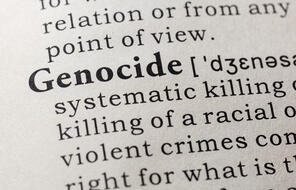Breadcrumb
- Home
- How It Works
- Expert Guidance
- On-Demand Learning and Resources
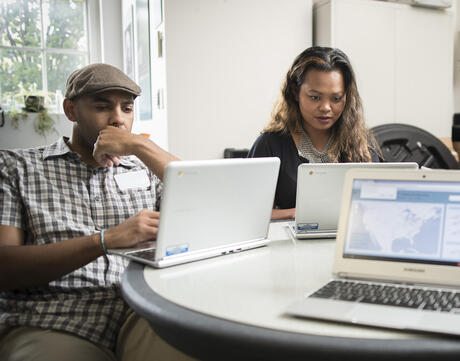
On-Demand Learning and Resources
This content was made possible by the Hammer Family Foundation.
Plan your own professional learning journey with our self-paced workshops or drop in to watch videos of teachers using our curriculum and teaching strategies with their students. Our on-demand resources will help you teach with confidence, grow as an educator, and build your content knowledge.
Our collection is updated regularly with new resources. Learn on your own or plan a learning series with your colleagues.
Related Facing History Resources & Learning Opportunities
Working for Justice, Equity and Civic Agency in Our Schools: A Conversation with Clint Smith
On-Demand

A Conversation with Steven Spielberg: Using Schindler’s List in the Classroom
On-Demand

Race, Equity, and the State of Education: A Conversation with Dr. Pedro Noguera
On-Demand

Teaching Coming of Age: Exploring Literature and Agency with #DisruptTexts Co-founder Dr. Kimberly Parker
On-Demand
An Introduction to Getting Started with Holocaust and Human Behavior
On-Demand

Centering Student Voices to Build Community and Agency
On-Demand


Self-Paced Workshops & On-Demand Webinars
Access a rich library of professional learning to engage your mind, heart, and conscience.
Featured Classroom Videos
Our videos feature teaching strategies to help you use the Facing History approach in your classroom.
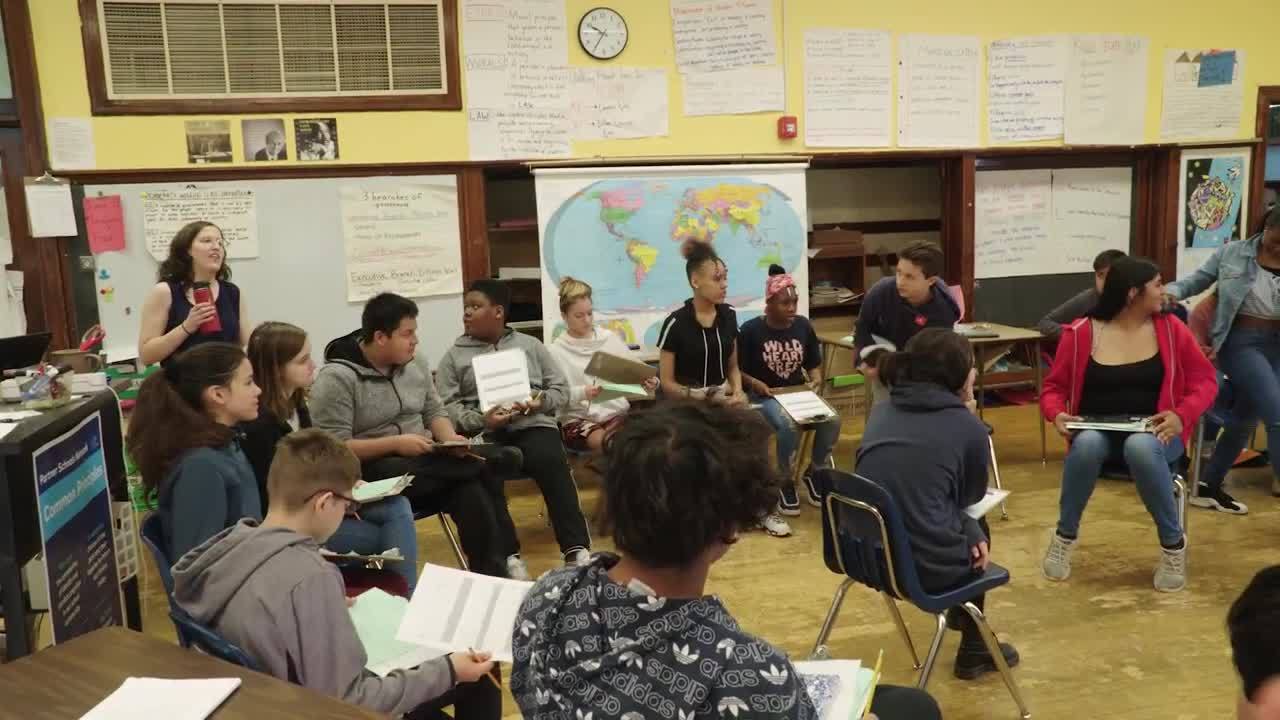

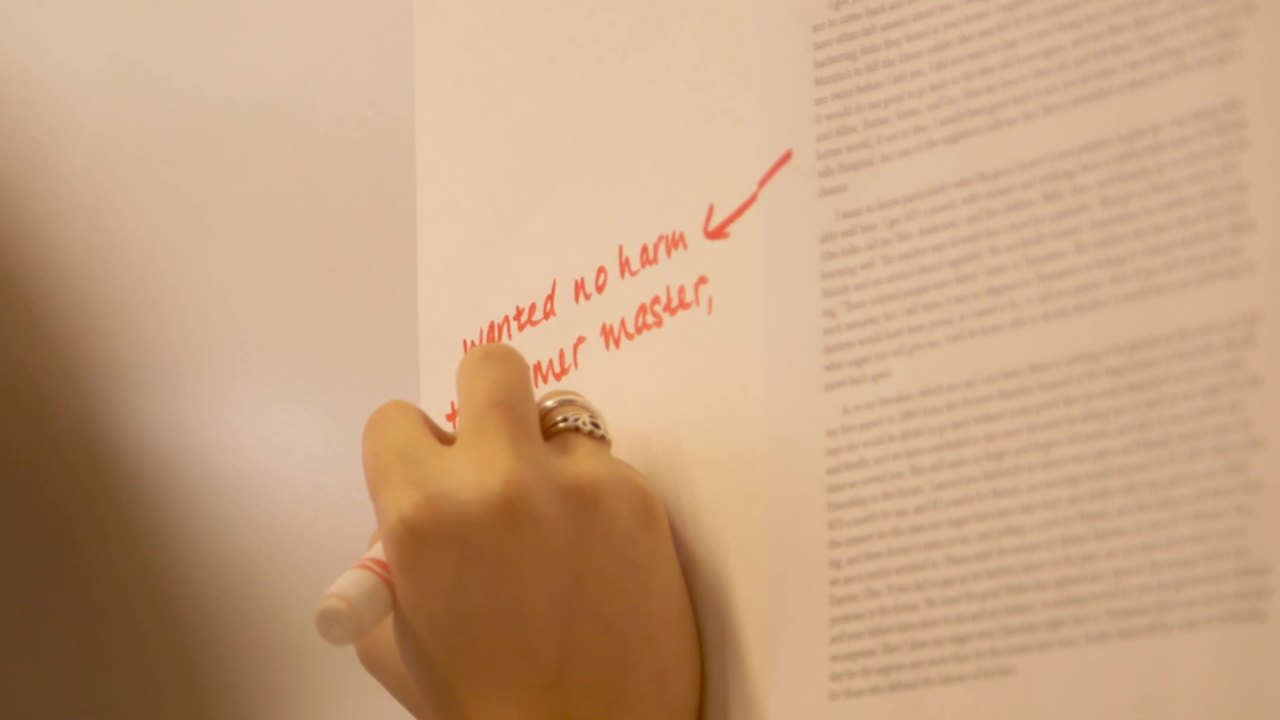
In fishbowl, there's an inner circle and an outer circle. So the inner circle are the few students who are brave enough to share out their thinking. The outer circle gives students who might be more leery, a little bit of time to think and process what is being said in the inner circle. And they have the opportunity to tap in to get their voice heard, and they tap in for somebody who has already shared so that we have that equity of voice in the classroom.
Any time that my students are engaging in fishbowl activity, they feel empowered. And so they know that I take a step back and that they take a step forward, but they know that I'm there for that facilitation and really it's a language acquisition process. There are many times in fishbowl and seminar that in preparing for that and analyzing the sources where students are trying to find their words and even within seminar trying to articulate themselves, and they have these ideas and they have these fresh perspectives, but what they don't necessarily have is the academic language and vocabulary that goes with it. And so I'm excited to hear their processes and to hear them struggle through understanding exceptionally difficult histories, but they do such a great job with it always. And so I'm excited to hear their fresh takes on it and apply a new level of precision of language to it as well.
[VIDEO PLAYBACK]
- Start thinking about if you would like to start in the fishbowl. We're going to start with the first two set of questions. So if you want to go back up to those two questions to see if you are prepared to speak to something, we're going to have about five to six chairs in the center fishbowl and then the rest of us are going to be on the outside.
So take about a minute think about are you in a place where you're ready to share out? And remember with fishbowl you can tap someone out so you're not in there the whole time. If you are ready to talk in the middle, take your chair into the middle, otherwise take your clipboard any resources you need. Turn your chair into the center. Try to be as smooth as possible about it.
A lot of you were talking about great things. So starting with those first two questions. Daniel, right here. Can I get you to read them out loud again for us? And then anybody in the center can start.
- How does the majority opinion explain its ruling in the case which justification does the majority provide for maintaining segregation?
- One of the things that our group talked about was like even though you want there was equal rights within political terms or whatever, but there's not like equal rights within social life. And it's like you can't force one race to be the same as another.
- With the idea of equality, the majority rule didn't really fit with this idea of equality because it was only supporting them. And it wasn't really supporting like Plessy, et al. and that idea of power being taken advantage of.
- Johnny, nice job. Let's go.
- The first section of Justice Henry Brown delivered a majority opinion. It says, laws permitting and even requiring the separation. And I think that line relates to the second question of what justification does the majority provide for maintaining segregation. And it's saying that they're not really targeting the inferior race. It was clearly what's going on.
- It doesn't target a specific race, but then people still use that law anyways in order to target races. So I guess my question is, what is, I guess, the danger of being colorblind and not having specific laws?
- Well, if you're colorblind, you don't see color. You don't see my experiences either. So--
- Basically what you're saying is the Constitution is, I guess, in a way racist, I guess, and only includes a certain amount of, I guess, the white people, I guess. And it says what the court decided our Constitution is colorblind and neither nor tolerates classes among citizens.
- I don't necessarily think that the Constitution is racist, but I think it did set it up so that people could later influence it to be racist. They never really have specific laws in the original Constitution that dictate certain laws that differ based on race, but I did think it was important to look at based on when the original Constitution was actually written. It was written during the time where slavery was still a huge thing, and it was written during the time where the only people that could really make choices and have power were white men.
- All right. Really strong everyone. Thank you so much.
[END PLAYBACK]
Facilitating that, it started to feel more just like a conversation, which is something that we're looking to help students acquire are those conversational skills in addition to the academic more literacy-rooted skills. Communication is obviously integral in that, but it's not always explicitly taught. Building those relationships is so essential in students. Trusting enough to be vulnerable in conversation that requires honesty, and it requires you almost doing something that feels uncomfortable in order to grow. And so if they don't have that foundation of trust, it becomes a lot more difficult to engage students.
Some students don't want to tap into the fishbowl because they don't feel that they are good enough or that their thought is articulate enough. So part of that rapport building is also necessary for that encouragement for the student that I can go to and say, hey, that idea I just went around the room nobody had it, but you did. And because they value their relationship with me and because they value their own voice ultimately, that encouragement helps them to engage.
Fostering Active Engagement Through Fishbowl Discussions
How do we make these changes? All right? Who stands up? Who are the people who see something that's unjust, or injustice happening in our society, and are willing to face that? Where do we as individuals begin to step out and make a change when we see something that is wrong? Part of the activity that I would like to do is do a viewing of bits and pieces of clips of Eyes on the Prize. Closed captioning actually helps a lot, especially with the ESL, the amount of ESL students that I have in my room, the reading. So that's one. And stopping the video-- stopping the video, checking for comprehension, and checking for just understanding. What do you think will happen next? After the nation sees this on TV, what do you think happens next? So take a minute, talk as a group. I was so surprised how the white people were getting so mad for something so small, just white kids coming into-- I mean, black kids coming into a white public school. And we saw how the white people are trying to get past, trying to kill kids, just for them trying to get education as-- Once your group has-- --any of the other kids. --discussed, I want you to pick one person to share-- And it's just, they're just there to learn. They're not there to do anything else. Right. They're there for a reason, that they would like to go there. I just want to know, what were they thinking? Why would they do that, to make it seem like the black kids were doing something wrong, or against the law, or they would hurt their kids, or something like that? To me something that really seemed cruel is how they're pushing the guy and lifting him up. Yeah. Yeah. Yeah. He wasn't even doing anything, just walking past, and some of them were just beating-- He was just minding his own business. --him with things. And they decided to be cruel like that. We're going to start with Ethan, and we're going to go this way. My group and I said that, well, what could happen next is the nation will-- they would get mad. Well, they will have more anger. And they would help. We were all angered how they were pushing on the guy when he wasn't really-- Mm-hmm. Doing anything. --doing anything. So I feel like since many people have seen that, more people would defend black rights and everything like that. All right, so your talk, you immediately went to how you guys felt, and you guys were angry looking at that. And you feel like the nation, if they saw that, they would sort of stick up for these students and the integration of schools. OK. Fair enough. And last but not least, Paul. It's not only race, but also probably abilities and sexuality. I know all the rights for the gay people, I think, now is basically the same. But with, I think, sexuality, it also shows how hatred can affect your thoughts, and you can be aggressive towards other races. Also, what you learn at home. Oh, wow. So you're actually taking it to connect it to what's going on today and how people judge individuals for, whether it be their sexuality or ability. And you feel like a lot of this anger, or I think we can say ignorance, comes from the home. To have a student who's physically disabled, how he was able to connect some of these things from the video to his own personal situation, even though it has nothing to do with race, it has nothing-- but it dealt with his own perceived limitations or limitations that society puts on him. And this has happened all throughout the year from different lessons that I've used. I feel like there's so much material there that if a teacher knows their students, you know what you can use, and what will work, and what you probably shouldn't touch on. And also knowing yourself as a teacher, that's very important, too. I really want young people to feel that their voice does matter.
Supporting a Culture of Inquiry in Your Classroom
Today we're doing the silent Big Paper. We have five stations, a big paper on each. And so the students are going to be going through with each of those stations marking up the papers, annotating the readings as much as they want as well as commenting, and having conversations, checking off, or contradicting, challenging, supporting other students' claims as we go through all five stations. At the end of the station, they will end up picking highlights from everything that has gone around annotations and showing that to the class as a whole.
And we have the students use that as a drawing board. And that really, I think, brings out student comments and creativity in a way that if we're just sitting and we go over it in class doesn't necessarily engage a lot of students because some of them won't want to raise their hands. Some of them won't want to talk.
But in that sort of private sphere of looking over that paper while it is attached to the poster and being in stations, reading it, and then being able to sort of write on it, it also gives them a connection to the history itself. They are dealing with primary sources, but it almost feels personal in a way.
What we're going to do is we're going to split up, and we've done Big Paper before. Big Paper are these stations. We've done this activity. I'm going to split you up into groups, or you're going to split yourselves up into groups based off numbering.
This time around, what I would like you to do is we're adding steps to it. Last time we went around to each station, and you annotated the reading itself. And then you left comments. You tagged onto other people's comments.
So this time, what I would like for you all to do is stay silent the entire time. In doing that, I'm hoping that it's going to force you all-- this is the reasoning behind you all being silent, I'm not just asking you to be silent because I'm mean-spirited. I'm hoping that you all will-- any sort of comment, any sort of thought that you all get, will write it on there instead of saying it out loud.
There are three guiding questions that I want you all to think about as you're going through all of this. How do the sources show the resiliency of newly freed enslaved peoples? What are the perspectives of the newly acquired freedom of former enslaved peoples that these sources give us? And what do people need in order to sustain and protect their freedom?
It will be up here if you need it. We'll go over it again. Think about these quickly before we start. Have them in mind and then we'll talk again. You'll have some time to re-collect your thoughts.
I'll give you five minutes on the first one. I'll tell you to shuffle. Remember that I asked you to add this new rule of staying quiet, right, Leo? Five minutes.
I do like how I'm seeing people already having that silent conversation on the paper.
So we're going to start off with our first station.
So our document was called the Freedmen's Bureau Outlines the Duties of Freed People. And it really just outlines how to be a successful free citizen in America. It talks about how you should-- seek education and how you should just because you're free doesn't mean you shouldn't work. You should work really hard.
It also talks about, which I thought was interesting, in the way that you have to prove that you deserve your freedom, have good behavior and then maybe other white people in the South will recognize, oh, they can handle freedom, and they deserve to be free people.
Yeah, it's almost kind of tragic in a sense. They're saying we have to act-- we have to be better, twice as good if we're going to be treated the same. Any of the comments that stick out?
Yeah. We said one of the most shocking things we saw was in the first sentence. It said you have been declared forever free. But just like someone commented, that there was still the Black Codes, the Jim Crow laws, and systematic racism throughout the history of the U.S.
Oh, man.
So, I have to say, maybe it didn't stand up to time.
Yeah, absolutely. We know from hindsight, you can imagine these people have such excitement about this. And important-wise? You've already summed up everything but if--
We saw the quote that says no people can be truly great or free without education, which is kind of surprising but also makes sense because you can't really get anywhere in this country without an education. You need an education to get a good job and make money.
As well as run a democracy. Everyone needs to participate in a democracy. It's run by the people. That's the whole point. And in order to do that, we need an education.
The process with Big Paper today in class I think worked really well with the kids. We added that extra layer of basically the silent conversation, which we're adding more and more rules as we go in. It worked really well in order to get them acquainted with the sources themselves and reacquainted with the idea that the people that we're talking about have voices.
And I think they could really wrestle with it because you have the actual source in the middle of this huge paper, and I'm telling them, it's yours. There's a little bit of the personableness that you get with a journal on these big papers where they can mark it up, they can annotate it on their own, as well as write all over it, which I think gives people ownership, and it worked really well.
Teaching Strategy: Big Paper
Get a glimpse inside real classrooms in our classroom videos to see our teaching strategies in action!
Explore Classroom Videos
Donate now and together we'll build a better world
You might also be interested in…
6 New Books on Human Rights

Anti-Trans Legislation: How We Got Here and Why it Matters

#MeToo Past and Present: 3 New Books on Challenging Gender Violence
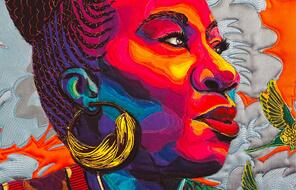
5 New YA Books on Women's History
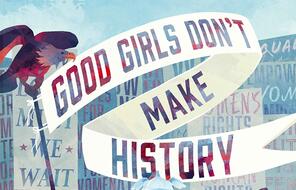
Why Genocide Recognition Matters
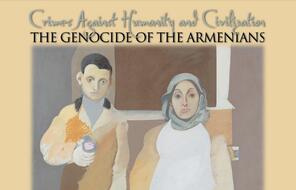
Today is the #WeNeedBlackTeachers Day of Action

Youth Activism and Grief on Earth Day

How to Build an Affirming Classroom in the Face of Anti-Trans Legislation

Remembering Rip Patton
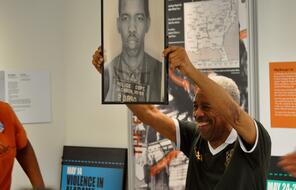
6 Resources for Teaching About 9/11

5 Timely Reads on Genocide

5 Tools for Teaching About Genocide
